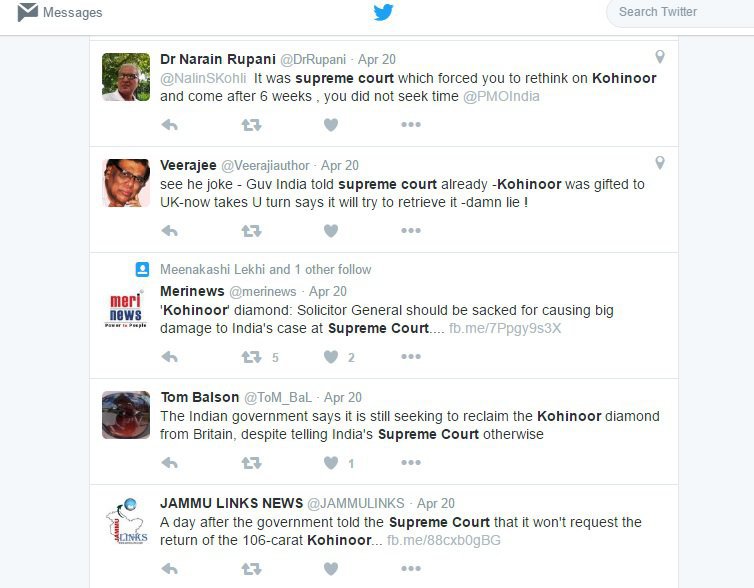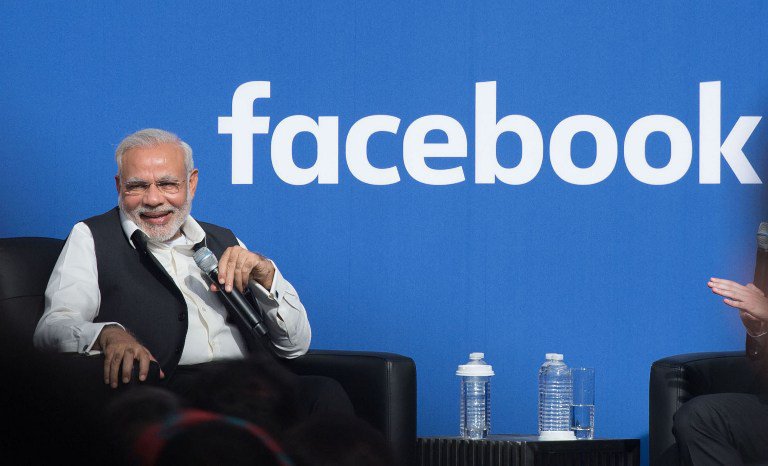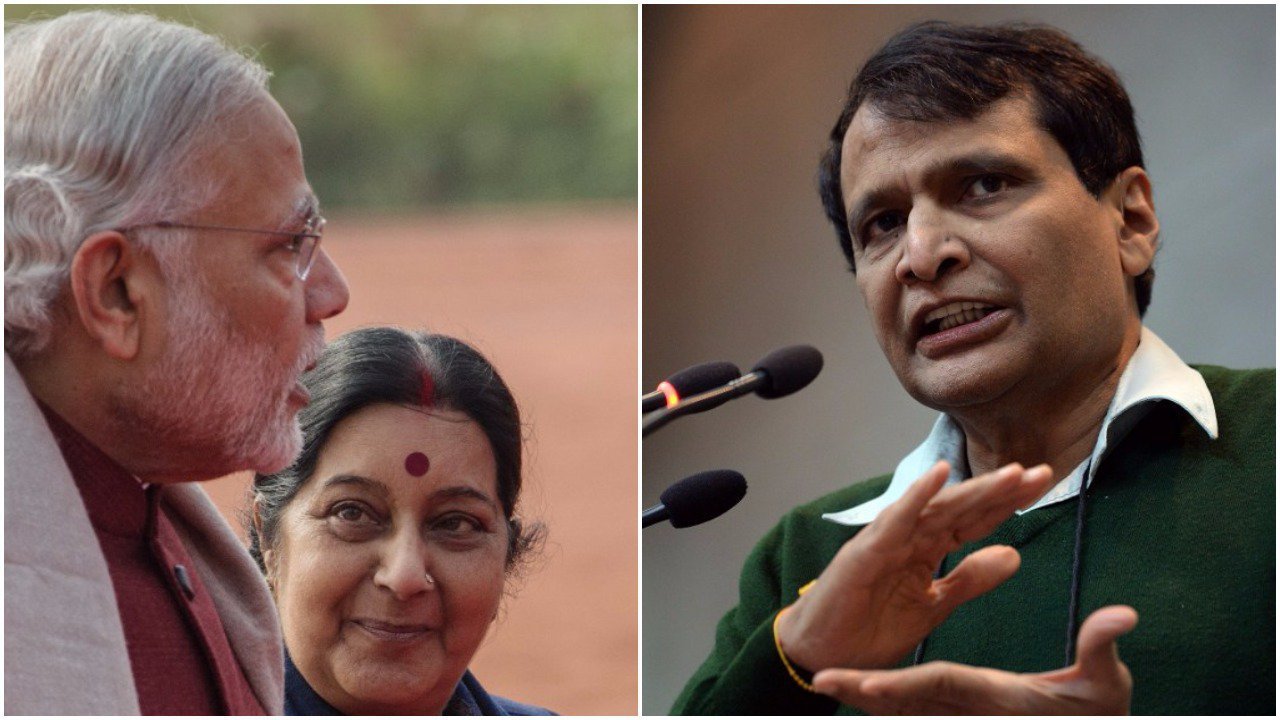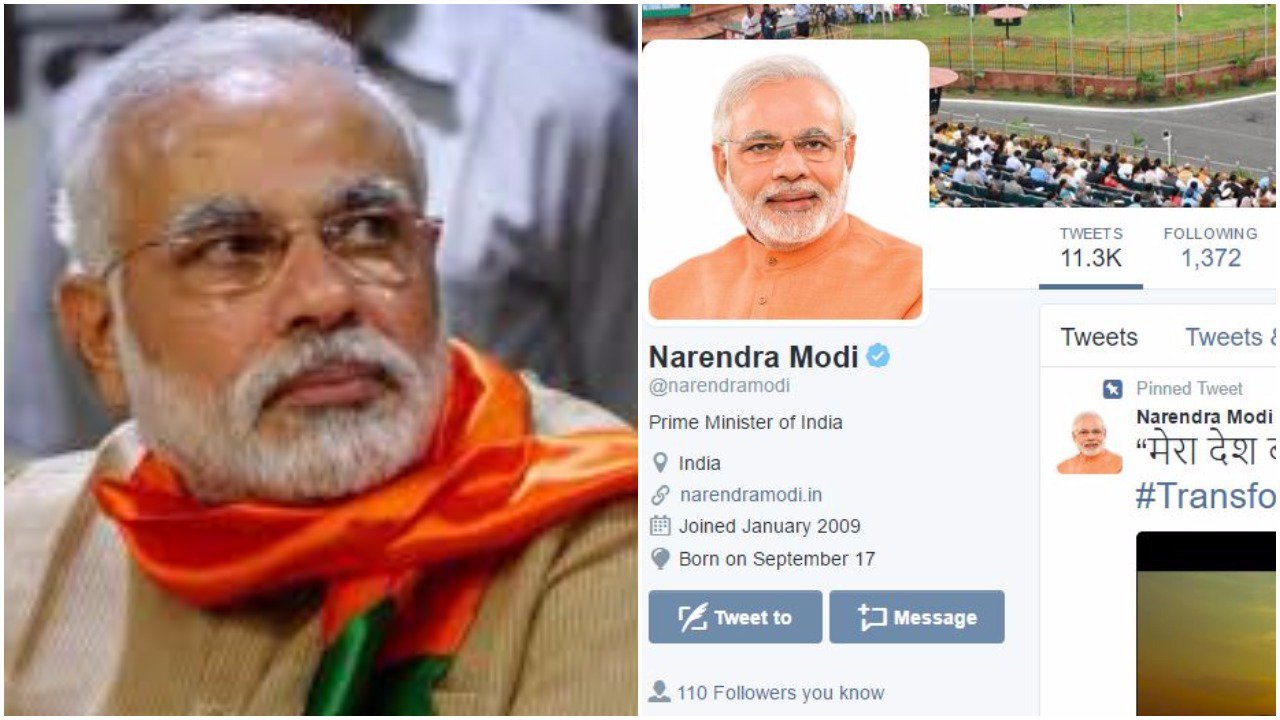Never before in the history of Indian politics has it been so easy to get hold of a Union minister. Never before has public outrage reached the ears of the powers that be so quickly. Never before have they reacted instantly. Never before would be see a public acknowledgement of our complaint. Never before would we see results.
Take for instance, the debate around the ‘much loved’ Kohinoor diamond. In April 2016, the Centre told the Supreme Court that the Kohinoor diamond was neither “forcibly taken nor stolen” by British rulers, but had been given as a “gift” to East India Company by rulers of Punjab.
Less than 10 minutes after the statement was made, the topic started trending on Twitter and from there things simply took off. For the ‘nationalist’ BJP government, it proved be a bit too much to handle.

In fact, just 24 hours of Twitter outrage later, the Centre issued a statement that was widely perceived as an apology of sorts.
The statement said that “ever since he has taken over as PM, Narendra Modi’s efforts led to three significant pieces of India’s history coming back home”.
It also said: “with regard to the Kohinoor Diamond too, Government of India remains hopeful for an amicable outcome whereby India gets back a valued piece of art with strong roots in India.”

Earlier, we would write to ministers and those in power and we would wait. Then, we would write again, still get no response. Finally, we would give up and go wait outside offices and still fail to meet them. It was the way things were. Now, we just tweet to them — over and over again, get something to trend and lo behold! The government actually takes action.
Now, if you are stuck in a foreign land, you tweet to Sushma Swaraj; if someone troubles you on a train, you tweet to Suresh Prabhu; if your baggage is lost after a flight, you can tweet to Mahesh Sharma. And in every case, action is taken. And if all else fails, you can also tweet at Modi’s Twitter account.

The public’s ability to coordinate such a massive and rapid response has evolved to such a degree that the government is clearly using the medium as a test balloon facility of sorts… say something and then wait, if people don’t respond, then go ahead or quickly rollback.
We saw a similar course of action during the EPF controversy. Finance Minister Jaitley announced it during the Budget speech, social media mayhem ensued. The public demanded change, the government was forced to respond. Rollback sarkar owed a lot to Social Media sarkar.
For so long, we have overestimated the value of broadcast media while underestimating the value of ‘social’ media which allow citizens to communicate among themselves. The Congress didn’t recognise this but the BJP clearly has.
Launched ‘Narendra Modi Mobile App’. Come, lets stay connected on the mobile! pic.twitter.com/FmHHJSCat8
— Narendra Modi (@narendramodi) June 17, 2015
PM Modi has actually assigned tutors to help his ministers be more active on social media. The three ministers assigned to tutor the lawmakers are power minister Piyush Goyal, Petroleum Minister Dharmendra Pradhan and Minister of State Jitendra Singh.
On May 3 this year, a group of elderly lawmakers huddled around the younger lot in Parliament’s central hall, taking lessons on Facebook and Twitter, and reviving defunct accounts. Imagine that!

The message is clear. Use Twitter as a medium to get your message across to people but also let it work as a two-way communication platform. In a sense, we would earlier depend on the media to convey the public’s view to the government. Now, on the other hand, we just have to track the conversation around trending topics to get an unbiased view of public perception on any topic.
And that is pretty convenient. Modi understood this very early, but it is only in his second year that his ministers have truly embraced the idea.
Everything you say will be logged and used in a way perhaps no Indian government really has. And for that they deserve our praise.

















